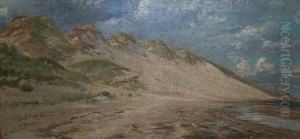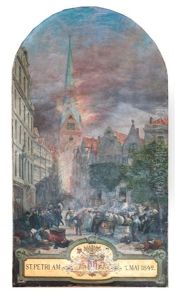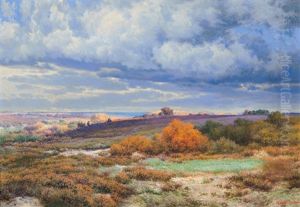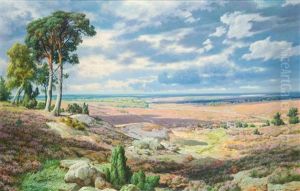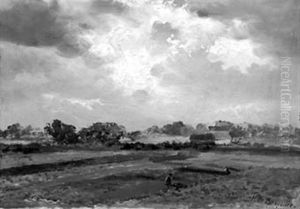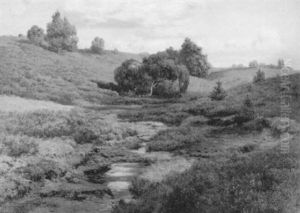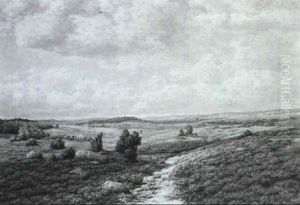Hermann De Bruycker Paintings
Hermann De Bruycker was a Belgian artist born on October 31, 1861, in Ghent, Belgium. During his lifetime, he was known for his intricate and emotionally evocative paintings, primarily focusing on genre scenes, portraits, and landscapes. His work is characterized by a meticulous attention to detail and a nuanced use of color, reflecting the influence of the Flemish painting tradition.
De Bruycker's early life and education in the arts were deeply rooted in the rich cultural heritage of Belgium. He was initially trained at the Royal Academy of Fine Arts in Ghent, where he developed his technical skills and artistic sensibilities. His education continued as he traveled to study the works of the Old Masters, which had a profound impact on his approach to composition and light.
Throughout his career, Hermann De Bruycker exhibited his work in various salons and galleries, gaining recognition for his contributions to Belgian art. His paintings often depicted the daily life of the people in his region, imbued with a sense of realism and empathy. De Bruycker's works are notable for their historical value, providing insight into the social and cultural aspects of his time.
Despite the quality of his work, Hermann De Bruycker did not achieve the same level of international fame as some of his contemporaries. However, he was respected in artistic circles and his paintings have been collected and admired by those with a deep appreciation for Belgian art history.
De Bruycker's later years were marked by continued artistic production, though his style evolved in response to changing artistic trends and personal experiences. He remained active in the artistic community until his death on December 28, 1940, in his hometown of Ghent. Today, his work is preserved in various museums and private collections, serving as a testament to his skill and dedication to the art of painting.
